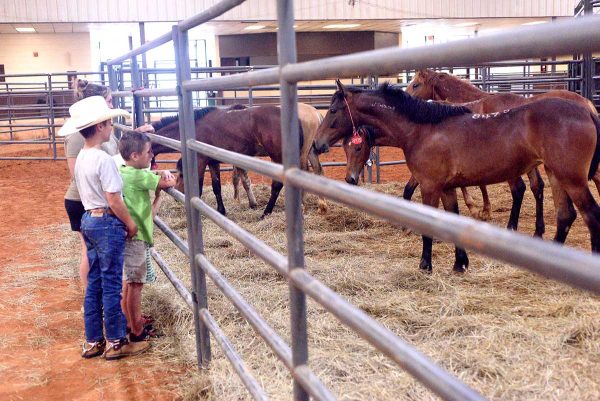Poinsettia savvy for lasting quality
Published 11:02 pm Wednesday, December 14, 2011
Question: For the past several years I have purchased some beautiful poinsettias for holiday decorations only to have them fade and wither by Christmas. What am I doing wrong and how do I get them to last longer? I would especially love for the white ones to last through New Year’s Day. The large ones I buy are quite expensive, so the longer they last the better.
Answer: The poinsettia is the top-selling traditional flowering potted plant in the United States associated with the Christmas season. It is native to Mexico and was first introduced in 1828 by the first U.S. ambassador to Mexico, Joel Poinsett. Some other common names for the poinsettia (Euphorbia pulcherrima) are Christmas Flower, Lobster Flower, Flame Leaf Flower. In Mexico it is known as Noche Buena. The bracts (colorful parts of the plant) come in shades of red, white, pink, yellow, and bi-color; plus the industry is always developing new and improved cultivars. I’ve even seen a few in blue and lavender tones.
To ensure lasting beauty and vitality it is important to purchase poinsettia plants which have not already passed their prime. Even if you decorate early, by making the right selection and giving the plant the correct location and care, you should have a beautiful plant throughout the holiday season. To make the correct selection look for plants with the following characteristics to ensure lasting quality and good health:
* Bracts (colored parts of the plant) should be brightly colored.
* Actual flowers or cyathia (yellow flowers in center) should be unopened or only partially opened.
* Foliage should be dark green and cover the stem all the way to the soil line.
* Plant should not be wilted or show signs of drooping leaves or disease.
* Leaves and bracts should not show signs of damage like tearing or splotches.
* Plant should be bushy in habit and be in proportion with container size to support the plant without tipping over (as a general rule, plant should be 2 ½ times taller than the diameter of the container).
* Check the plant for signs of insects especially on the undersides of the leaves, where whiteflies and aphids hide; and check for fungus gnats at the soil line.
Once you have chosen a poinsettia take care when transporting it home to avoid cold, wind, and rain as these can cause damage which will show up soon after exposure.
Once you have arrived home with your new plant, if cared for properly, your poinsettia may last many weeks on up to several months. Here are some tips on location and care to prolong the life of your new plant:
* Poinsettias prefer bright, indirect light.
* Keep them draft free (away from outside doorways, heat vents and heaters) and out of extreme temperature fluctuations.
* Leaves should not be allowed to touch windows, as the exterior cold may damage the leaves.
* Over-watering can cause leaf and bract drop; on the other hand under-watering can cause wilting and leaf/bract drop. As a rule the plant prefers to be kept moist but not wet or soggy.
* When you water make sure you water thoroughly and then allow the pot to drain before placing it back into a saucer or decorative container so it doesn’t sit in water. Fertilization is not necessary while the plant is in flower.
* If the poinsettia came in a foil or plastic wrap, either remove the wrap or punch holes in it to allow drainage.
* Ideal daytime temperatures should be 68o to 72o F and nighttime temperatures should be 60o to 65oF. Anything below 50oF could potentially cause decline.
* If your home has dry air you should help with humidity by placing a saucer containing gravel under the pot and add enough water to provide humidity without the pot actually sitting in the water.
With correct selection, location and care, your poinsettia should remain healthy and attractive throughout the holiday season. Sometimes we get requests about saving poinsettias for re-blooming the following year. This can be done, but it is a challenge and a yearlong process, so if that is your choice call me at the St. Clair County Extension office at (205) 338-9416 or email ulricwg@aces.edu for further instruction on the process or you may go to the Extension web site www.aces.edu/StClair and search our publications for poinsettia production. Here is the link to the publication: http://www.aces.edu/pubs/docs/A/ANR-0894/ANR-0894.pdf


